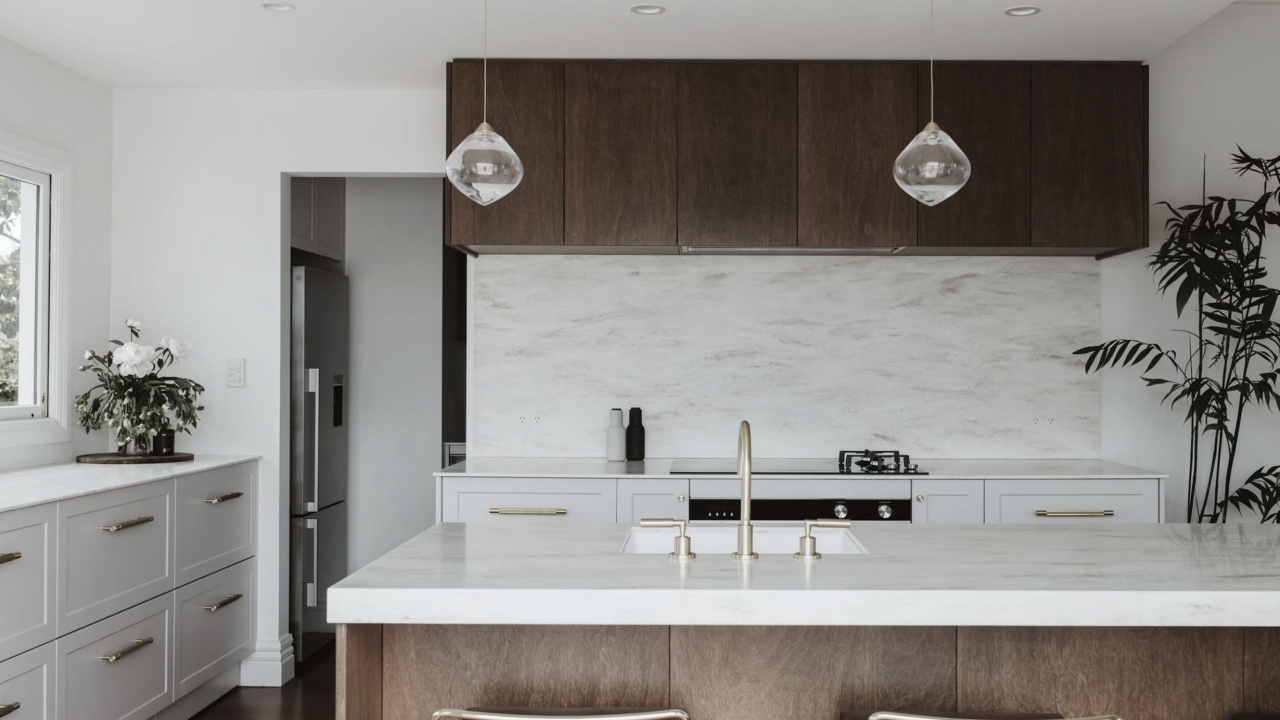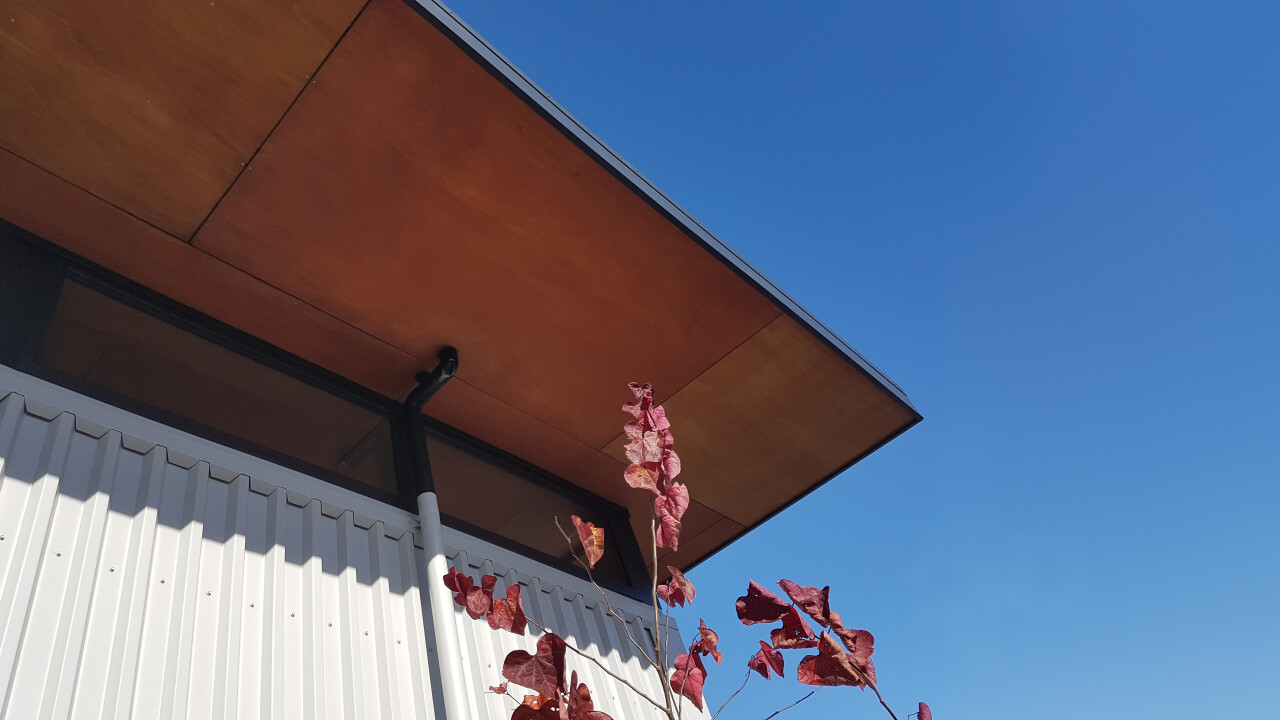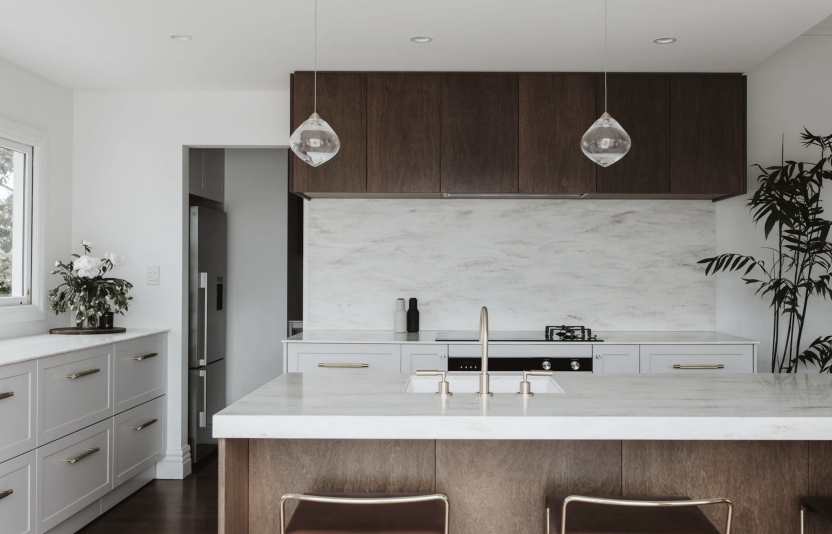
Top 5 FAQs about plywood cabinetry care
Plywood cabinetry offers a warm, architectural finish that stands out in both residential and commercial interiors. For both homeowners and architects specifying this material, questions about upkeep and durability are common.
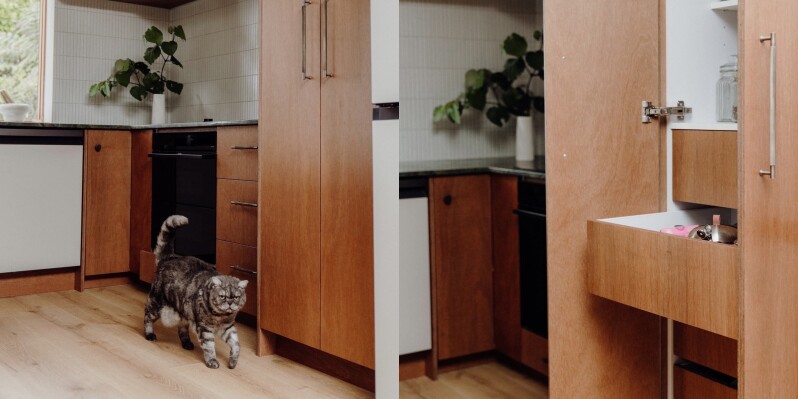
Our Keruing BS1088 Marine Ply unfolded this dreamy kitchen cabinetry by Variant Spaces. View case study here.
1. Is plywood cabinetry easy to maintain?
Yes, plywood cabinetry is easy to maintain when finished properly. Once sealed with the right coating, it performs much like any other quality cabinetry material requiring only a gentle wipe-down with a soft cloth and mild cleaner. For most projects, it’s a low-maintenance choice that looks great and lasts well with minimal effort.
The most important factor is the initial finish. If that’s been done right, maintenance will be minimal.
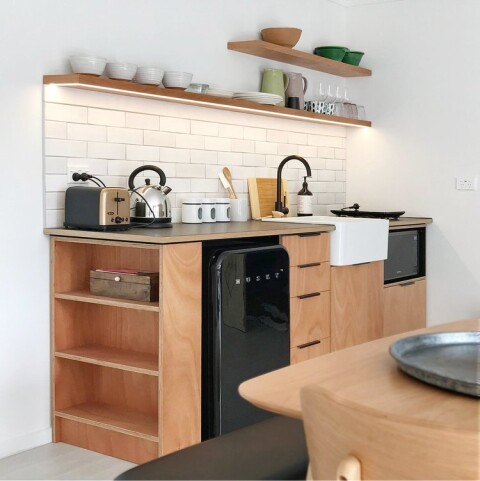
Our Marine Gaboon Plywood Kitchenette (Gaboon MLH) by Motide
2. What finish should I specify for best durability?
This depends on the application and the environment. The most common options are:
• Lacquer: A permanent, low-maintenance coating ideal for kitchens
• Oil: Often used for exposed plywood edges, with reapplication every 2 to 3 years
• Stain: penetrates into the timber, rather than sitting on the surface, which means better long-term protection against moisture and wear
• Varnish/Polyurethane: A robust topcoat that can be used over stain for extra protection
For laminate-on-ply cabinetry, we typically recommend oiling the edges, but in higher-use commercial areas, polyurethane edge sealing may be preferred. Some clients opt for lacquered edges, but this is a more involved application and usually needs to be done by a professional.
3. Do different environments require different finishes?
Yes. The environment should always influence the choice of finish:
• Kitchens: use a full lacquer or stain and polyurethane to seal all surfaces, including edges
• Bathrooms and wet areas: require a moisture-resistant finish that penetrates the surface - stain or stain with a topcoat is ideal
• High-sun areas: specify finishes that include a UV inhibitor
• Outdoor kitchens: only use plywood in covered areas, and expect higher maintenance - it should never be in direct weather
If the cabinetry is finished correctly and protected from prolonged dampness or UV, it will perform well for years.
4. What cleaning products are safe to use?
Cleaning should be based on the finish used. As a general rule:
• Use a non-abrasive cloth and mild soap solution.
• Avoid ammonia, alcohol-based sprays, and abrasives
• For matte laminates or acrylic panels, follow the manufacturer’s specific cleaning instructions
For cleaning guidance tailored to your project, contact the finish supplier or contact us to speak with our customer service team. Blake, our customer service lead, can help answer detailed questions about compatible cleaning products.
5. What should clients know at handover?
We recommend giving clients a simple rundown of how to care for their cabinetry based on the finish chosen. For example:
• Oiled edges may need reapplication every couple of years
• Lacquered finishes generally don’t need redoing
• Clean with gentle products - no harsh chemicals or scrubbing pads
• Wipe up spills and standing water promptly to avoid moisture damage
While Plymasters provides general advice, the long-term performance of the finish lies with the coating supplier and applicator. We always recommend following their care and maintenance guidance.
Final note: if your plywood cabinetry is finished correctly for the environment it’s in, ongoing care is minimal. It’s not a high-maintenance material, it’s a high-performance one!
